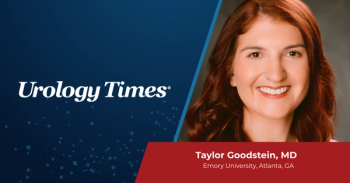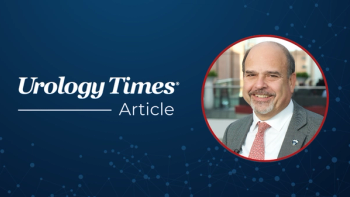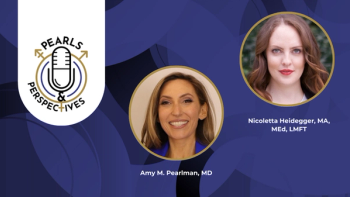
From BCG shortage to scientific surge: Inside the NMIBC treatment renaissance
Key Takeaways
- The BCG shortage has accelerated the development of alternative therapies for NMIBC, transforming treatment strategies and emphasizing bladder preservation.
- Urologists face challenges in selecting appropriate treatments and sequencing strategies due to the expanding arsenal of novel therapies.
Anne K. Schuckman, MD, describes the growing number of options in NMIBC and the impact of these therapies on clinical practice.
The BCG shortage, which ramped up in 2019,1 has significantly disrupted the treatment landscape for patients with non–muscle invasive bladder cancer (NMIBC), a disease for which BCG has been the standard of care for decades. To meet this challenge, researchers, industry partners, and other clinical experts have worked together to accelerate the development of alternative therapies that offer patients options beyond BCG.
In a recent interview with Urology Times®, Anne K. Schuckman, MD, described this moment as a “renaissance” in NMIBC care. With 3 FDA approvals since 2020 and many more agents in development, urologists and patients now have a wealth of therapeutic options. This innovation is transforming how clinicians approach the management of high-risk disease, with increasing emphasis on bladder preservation and personalized treatment strategies.
Thus, with an expanding arsenal of novel therapies, urologists now face different challenges: selecting the most appropriate treatment for each patient, navigating optimal sequencing strategies, and determining which combinations may provide added benefit.
One thing is clear: We are just on the cusp of a paradigm shift in NMIBC care. These advances are not only offering patients the chance to delay or avoid radical surgery, but offer the potential for years of effective, bladder-preserving treatment. With even more therapies in the pipeline, the future holds promise for more personalized, durable, and quality-of-life–preserving approaches to care.
Schuckman is an associate professor of urology at the University of Southern California, Los Angeles.
Urology Times: In your view, how has the BCG shortage accelerated the adoption of novel alternative therapies such as gene therapy or checkpoint inhibitors?
Schuckman: When the BCG shortage started, I don't think a lot of people, even at that time, were thinking that there would be a lot of trials in the BCG-naive space. I remember being in meetings with bladder cancer experts and people saying "It'd be too hard to do those trials. They'll never happen." Now, we have many trials where we have patients who are BCG-naive being treated with novel agents based on obviously preliminary data from the BCG-refractory space. To me, the shortage in BCG has really opened people's minds and scientific creativity to moving other therapies first, getting rid of the old paradigm, and saying, “Why is BCG the only thing that we're thinking about in these patients?” I think it's sparked a whole new era in how we're thinking about what the best first-line treatment for patients might be.
Urology Times: As you alluded to, there has been an explosion of new options in NMIBC, with even more agents coming down the pike. From your experience, what are patients looking for when they're choosing between these different options?
Schuckman: The answer is probably a little bit different for all patients. The bottom line is patients are looking for a therapy that is effective. For some people, that means long-term efficacy, and for [others] that means just buying a few years before they may need to move on to some other type of therapy. So, number 1, efficacy.
I think number 2, patients are looking for something that's going to be fairly easy to tolerate and not disrupt their life very much while they're undergoing therapy. That might mean less treatments, [or] it might mean that it's oral or easy to have administered. And 3, obviously, I think the least [adverse events] that patients experience, the better.
Urology Times: What are some of the biggest challenges right now for you in terms of delivering optimal bladder cancer care?
Schuckman: From a patient perspective, one of the challenges right now, honestly, is that there are so many different options. If you go to one place, you're going to be offered this. If you go to another place, you're going to be offered this. Sorting through what might be the best option is tricky. I think you need to make sure that you are talking with somebody who has a few things at their fingertips so that they can help pick what might be best for an individual patient.
I think one of the big challenges right now for NMIBC providers is that we don't know the optimal sequencing for any of these agents. [There are a number of] interesting trials that are ongoing right now, and we're learning about multiple things. One, what agents can we use first? What agents should we use second? As we go forward, I think we'll learn a lot about [how these should be sequenced. We might know that a therapy works,] but does it work after somebody's had a PD-1 agent, or would it be better if they got the PD-1 agent with that? There are certainly ongoing trials right now looking at pairing systemic PD agents with intravesical therapies to try to increase immune response in that way. We've seen all these single-arm trials in a single agent, and as we start to see some of these combination agents, that'll be really interesting.
Urology Times: What role do you see for gene therapy in the treatment landscape moving forward?
Schuckman: We're probably on the very early application of gene therapy in non–muscle invasive bladder cancer. We only have 1 approved, but we have enGene’s trial ongoing right now, which is a non-viral vector gene therapy product. I think people will start to develop more novel ways to incorporate this. As gene therapy goes forward, practitioners and patients will become more comfortable and fluid in discussing those therapies. It will become 1 part of the arsenal of how we're caring for NMIBC in the future.
Urology Times: Is there anything else that you wanted to add?
Schuckman: It's exciting to be part of this time, which I feel like is a total renaissance in the care of patients with non–muscle invasive bladder cancer, particularly for patients with really high-risk disease. Even in just the past 3 years, this disease has gone from something where we can put off more aggressive therapy for a year, to something where we're talking about having, potentially, for some patients, years and years of sequencing therapies and allowing them to maintain their bladders. I think most patients want to do [that. These options] allow us to avoid having to do such a radical surgery in somebody with non–muscle invasive disease. It's an exciting time for investigators and an even more exciting time for patients. The science is just unbelievable, novel, and exciting.
REFERENCE
1. CBER-regulated products: Current shortages. US Food & Drug Administration. Accessed June 16, 2025. https://www.fda.gov/vaccines-blood-biologics/safety-availability-biologics/cber-regulated-products-current-shortages
Newsletter
Stay current with the latest urology news and practice-changing insights — sign up now for the essential updates every urologist needs.



















